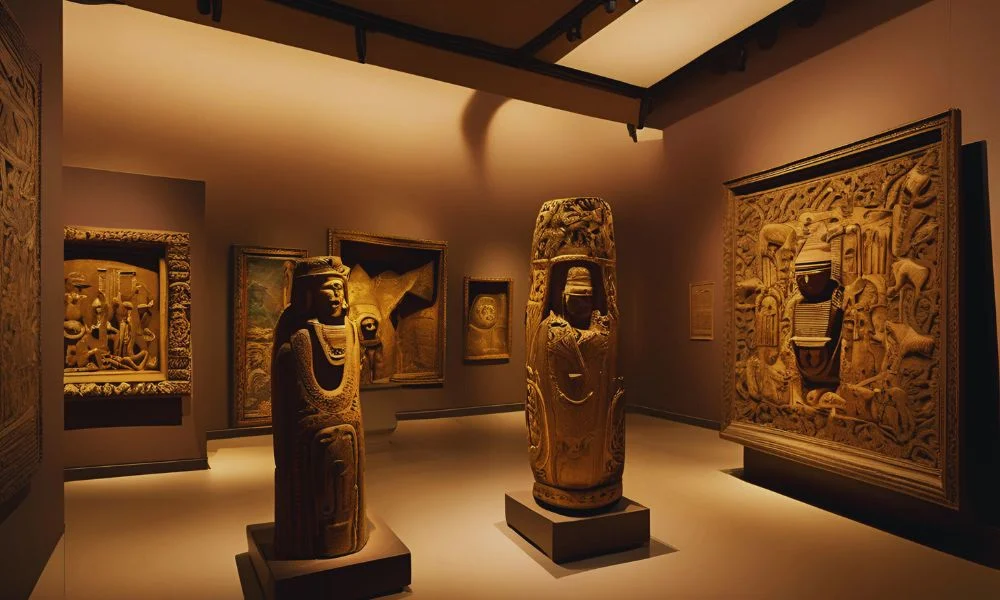Greetings and welcome to Ancient Artz, your go-to source for all things ancient art. In this article, we will delve into the fascinating world of ancient artz, exploring the stories, cultures, and histories behind the artifacts and creations of ancient civilizations. From the grand pyramids of Egypt to the delicate sculptures of Greece, ancient art is not just about beauty—it’s a reflection of the values, beliefs, and lives of the people who created it. Join us on a journey through time as we uncover the richness of this extraordinary world.
The Essence of Ancient Artz
Ancient artz, as we refer to it here, encompasses more than just the visual appeal of objects. It’s a lens through which we can understand the past—the stories told through art are as important as the artifacts themselves. When we think of ancient art, we often think of grand structures or fine craftsmanship. However, what makes ancient art truly captivating is its ability to reveal the cultural, social, and religious practices of the time.
Ancient civilizations around the world created art not merely for aesthetic purposes but as an essential part of daily life. Art was a reflection of the environment, the people’s beliefs, and their relationship with the world around them. Whether through painting, sculpture, architecture, or pottery, ancient art served as a way to preserve stories, express power, or seek divine favor.
Ancient Egypt: A Legacy in Stone
When we talk about ancient artz, one of the first civilizations that comes to mind is Ancient Egypt. The Egyptians left an indelible mark on history with their monumental art, which was both functional and symbolic. From the grand pyramids to the intricate hieroglyphic inscriptions, Egyptian art was designed not just to be seen but to serve a greater purpose: to honor the gods, commemorate the dead, and ensure an afterlife.
The Egyptians were masters of creating art that lasted. The famous statues of pharaohs, such as the colossal figure of Ramses II, demonstrate their ability to create lasting works that not only honored rulers but also sent messages to future generations. The meticulous detail in their tomb paintings and the precision of their sculptures were all part of a larger cultural effort to preserve the essence of life for eternity.
Greek Art: The Pursuit of Beauty and Proportion
Greek art, often considered the pinnacle of ancient artistic achievement, shifted focus toward idealized human forms and the exploration of beauty, proportion, and balance. The ancient Greeks brought new dimensions to art, emphasizing the importance of the human body in sculpture and exploring themes of heroism, mythology, and the gods.
Greek sculptures, such as the iconic Venus de Milo and the Discus Thrower, exemplify their idealized vision of the human form. The Greeks also introduced the concept of perspective in art, creating the foundation for future artistic movements. The Parthenon in Athens, with its perfectly proportioned columns and elaborate frieze, represents the Greek ideal of harmony between structure and art.
Art was deeply intertwined with religion, and the Greeks depicted gods and mythological figures in ways that communicated their divine powers and human characteristics. Temples, like the Parthenon, were built to house statues of gods, and the intricate carvings on these buildings told stories of Greek gods and heroes.
Roman Art: The Marriage of Function and Ornamentation
Roman art, while heavily influenced by Greek traditions, was also pragmatic in its approach. Romans were not only concerned with beauty but with function. They excelled in creating art that served practical purposes, such as public buildings, baths, roads, and bridges. Roman portraiture, which focused on realistic depictions of individuals, often served as political propaganda or a way to honor deceased family members.
The Romans also mastered the art of mosaic, creating intricate designs for floors, walls, and ceilings. These mosaics often depicted scenes from daily life, mythology, and nature, offering a glimpse into the Roman world. Their use of arches and domes in architecture laid the foundation for future architectural advancements in the Western world.
Ancient China: A Tradition of Refinement
Ancient China’s art was influenced by the country’s long history and rich cultural heritage. The Chinese placed great importance on balance and harmony in both art and life. Traditional Chinese art includes everything from delicate ceramics to elaborate scroll paintings. Unlike Western art, which often focused on realism, Chinese art emphasized symbolic meaning and a connection to the natural world.
One of the most famous contributions of ancient Chinese art is its ceramics. The Terracotta Army, a collection of life-sized statues buried with Emperor Qin Shi Huang, is one of the most extraordinary examples of Chinese craftsmanship. These statues, each with unique facial features, were designed to protect the emperor in the afterlife.
Chinese landscape paintings, often rendered in ink on silk or paper, depicted vast, idealized views of nature. These works of art were meant to convey not just the physical beauty of the landscape but also the philosopher’s reverence for the natural world and the search for balance and harmony.
Ancient Artz in the Americas
Across the world, ancient civilizations in the Americas also left their mark through art. The Mayans, Aztecs, and Incas all created sophisticated art forms that told the stories of their peoples. From the intricate stone carvings of the Mayans to the elaborate goldwork of the Incas, these civilizations used art to express their religious beliefs and political power.
The Maya, for example, were known for their advanced knowledge of astronomy, and their art often depicted gods and celestial events. The Aztecs created magnificent sculptures and pottery, often with religious themes, while the Incas were renowned for their metalworking skills, particularly in gold and silver.
In the Americas, art was also tied to ritual and ceremony. Many pieces were created for use in religious practices, such as offerings to gods or for use in burial sites. These artworks were designed to honor the gods and ensure the prosperity and protection of the people.
Art as a Reflection of Culture and Identity
What all these examples of ancient art have in common is their role as a reflection of the cultures that produced them. Ancient artz goes beyond simple aesthetics—it’s a window into the minds and lives of people who lived thousands of years ago. The themes, symbols, and forms used in ancient art tell stories of war, peace, love, and death.
The artworks created by ancient civilizations were often deeply tied to their beliefs, religions, and social structures. They were ways of understanding the world, preserving history, and ensuring that their cultures would be remembered by future generations.
Preserving the Past: The Importance of Ancient Artz Today
In today’s world, ancient art is more than just a relic of the past—it’s a vital part of our cultural heritage. Museums, excavations, and academic studies continue to unearth and preserve these treasures, offering insights into the lives of ancient peoples. Whether it’s the detailed frescoes of Pompeii or the awe-inspiring architecture of the Great Wall of China, these pieces of art continue to inspire and educate.
For modern societies, ancient art serves as a reminder of the enduring power of human creativity and expression. It allows us to connect with the past, understand the complexities of ancient cultures, and appreciate the craftsmanship and ingenuity of those who came before us.
Conclusion
Ancient artz is much more than just beautiful objects or structures; it’s a key to understanding ancient civilizations. Through their art, we can explore the beliefs, values, and lives of people who lived centuries or millennia ago. From the grandeur of Egyptian tombs to the delicate brushstrokes of Chinese calligraphy, ancient art reveals the stories that shaped the world. As we continue to explore and appreciate these artistic treasures, we are reminded of the timeless nature of human creativity and the universal desire to leave a lasting legacy.










